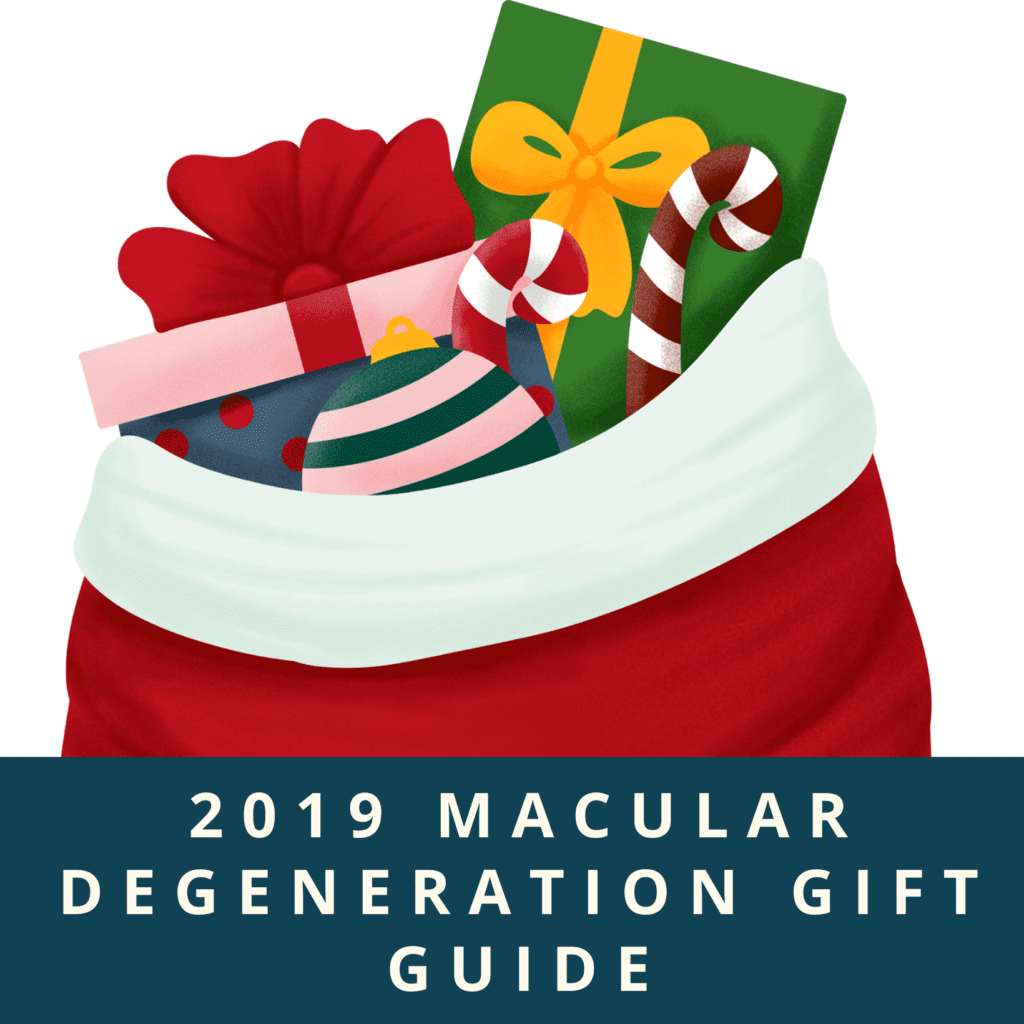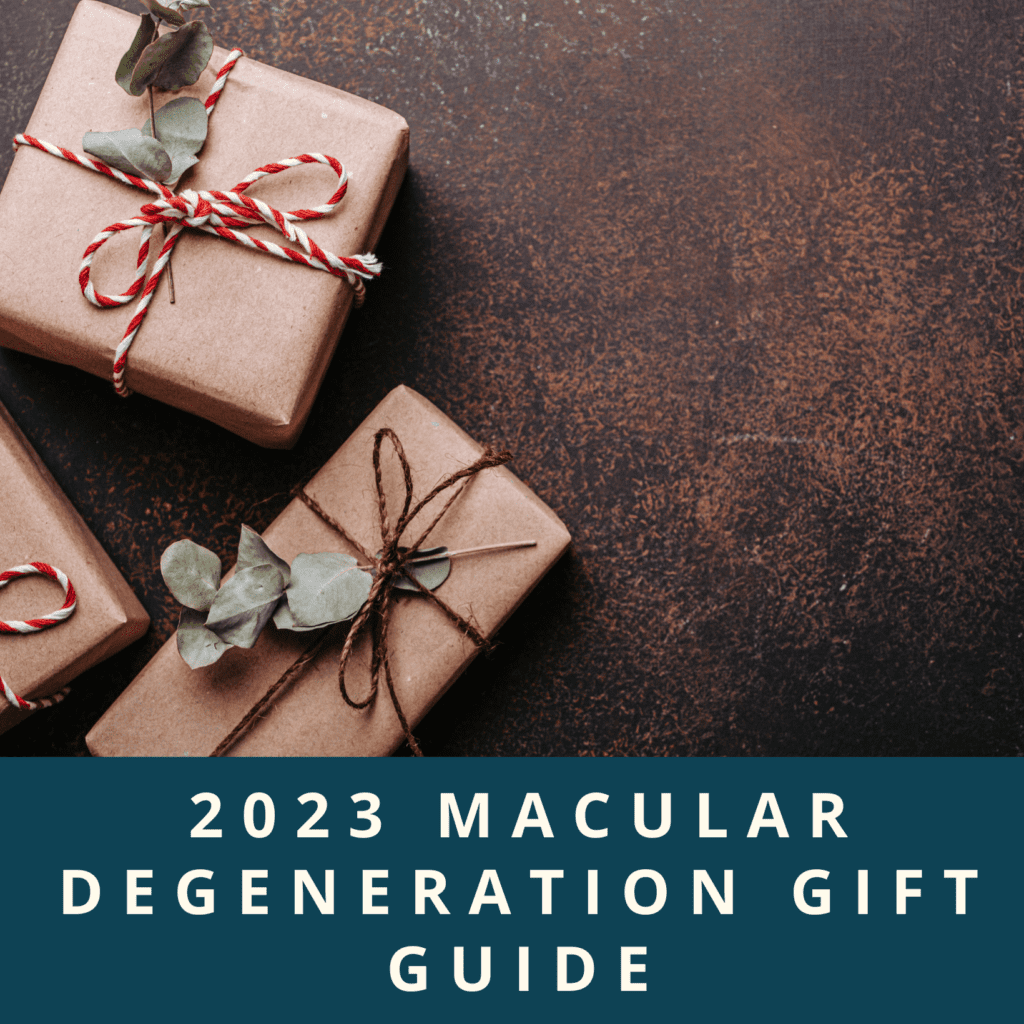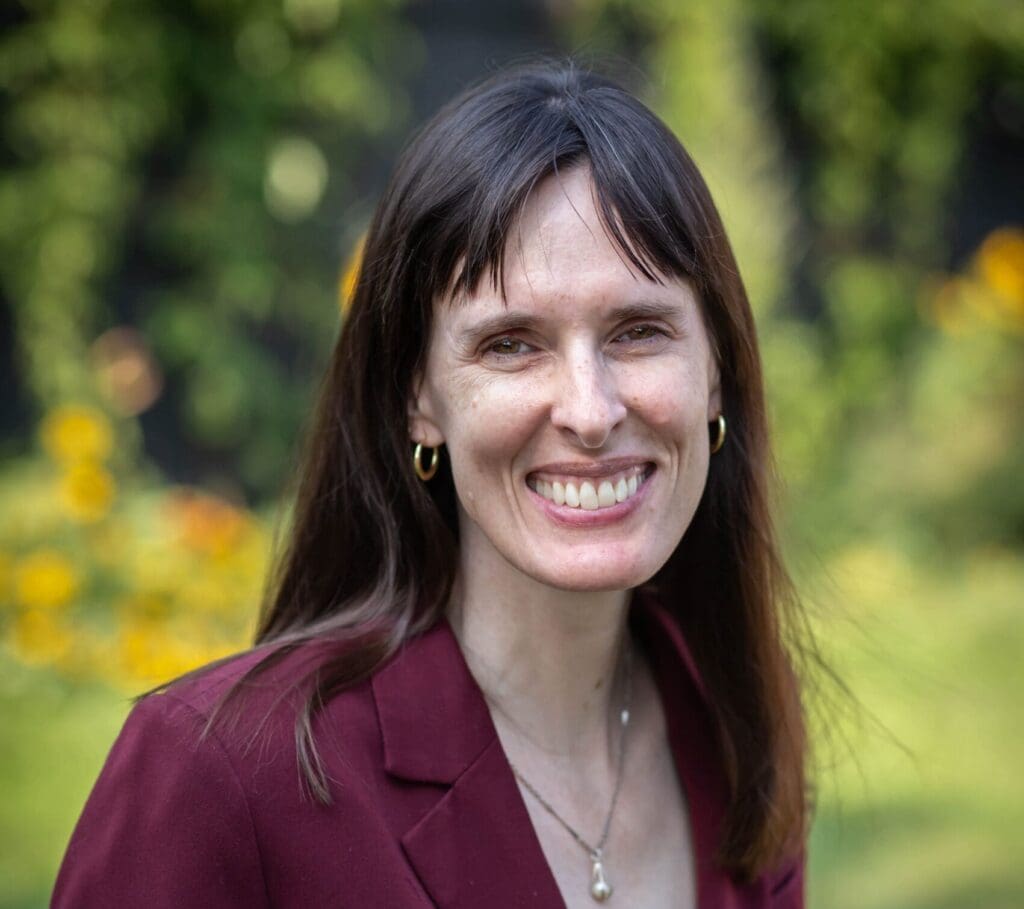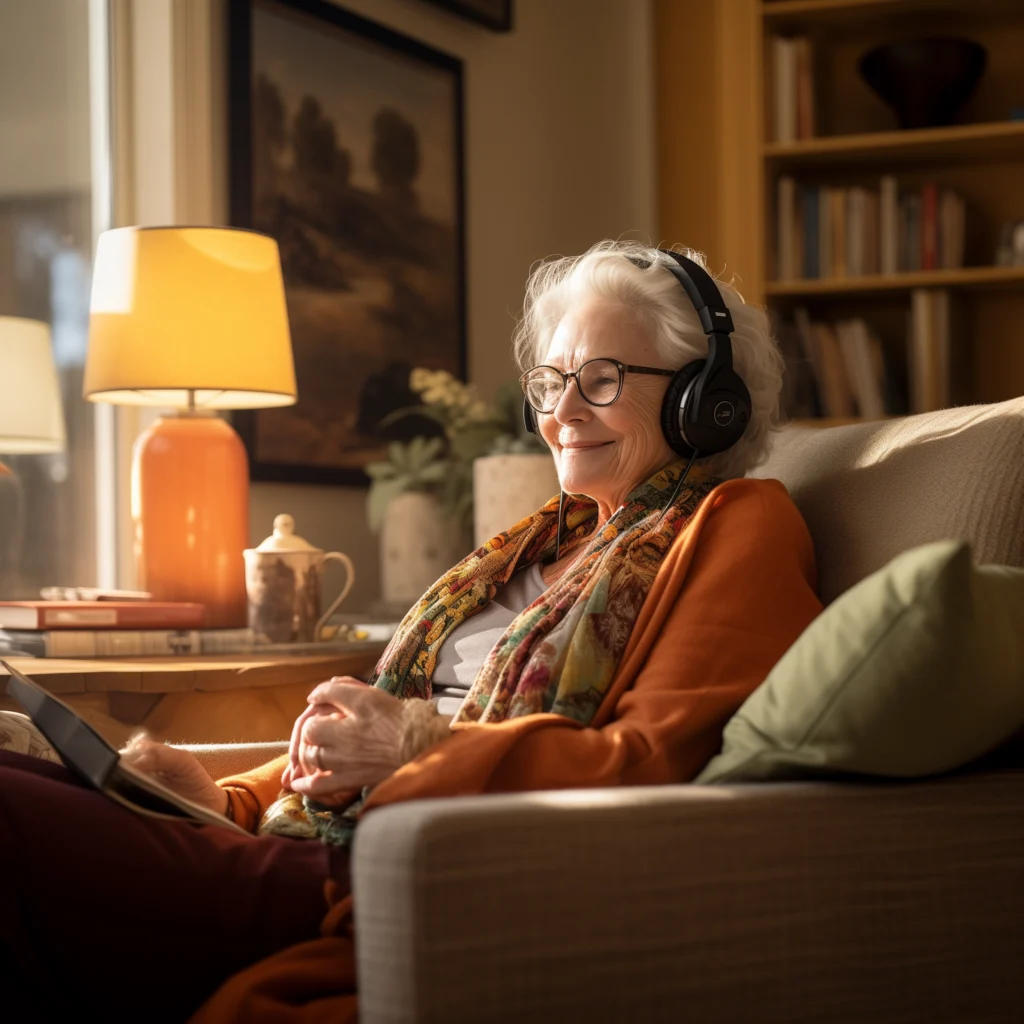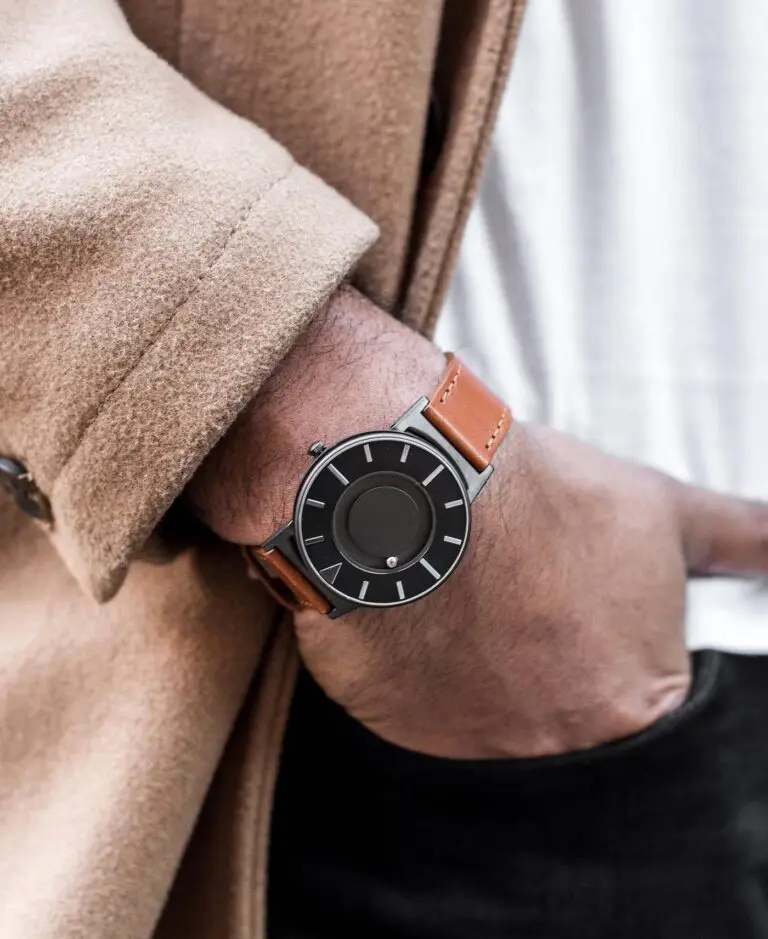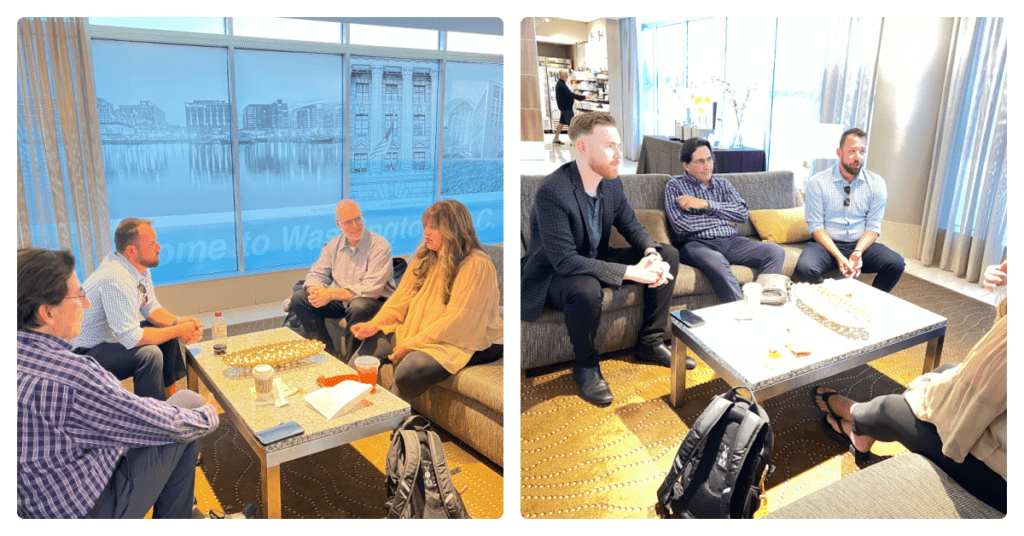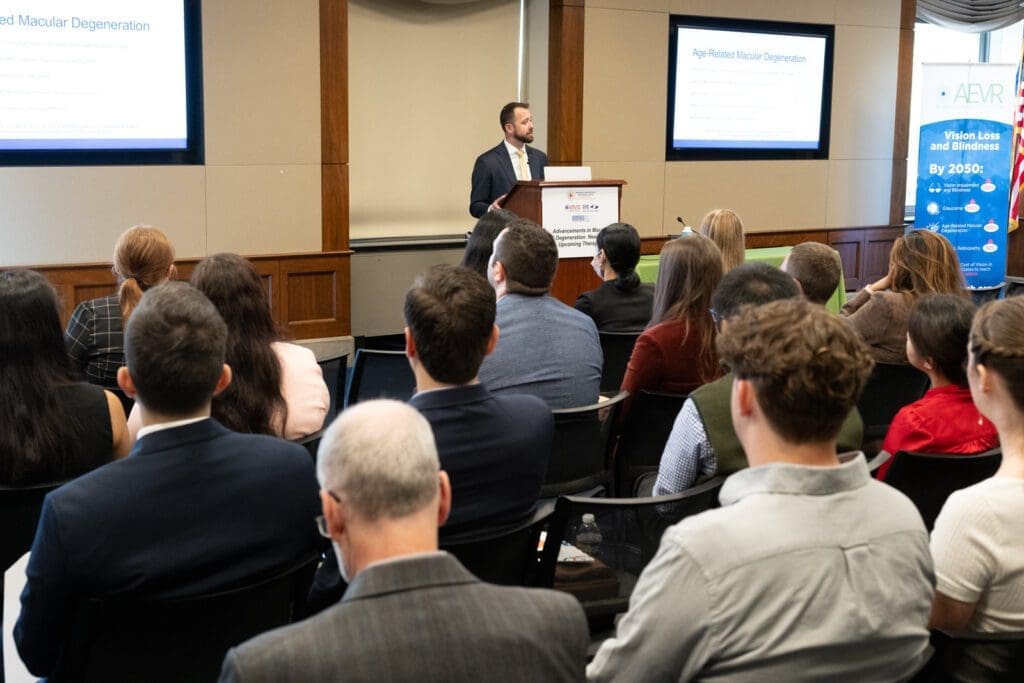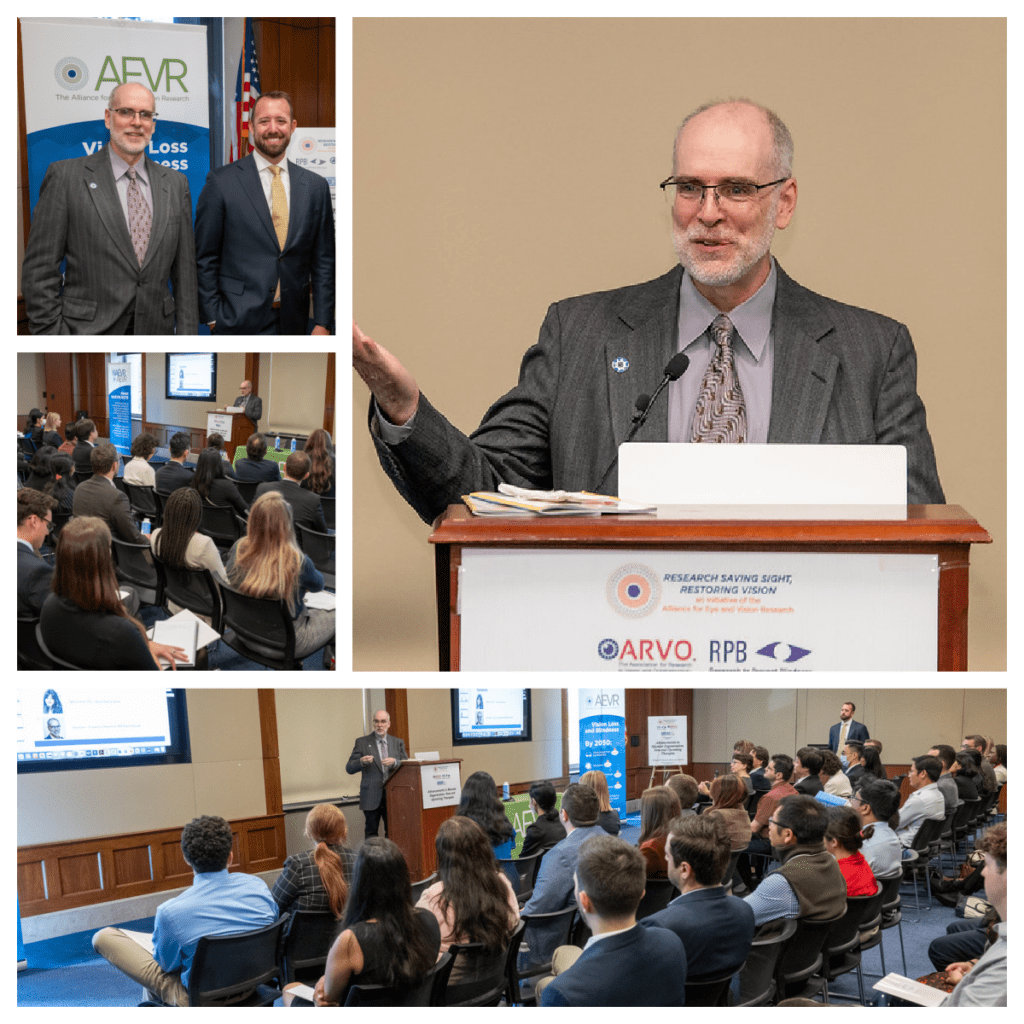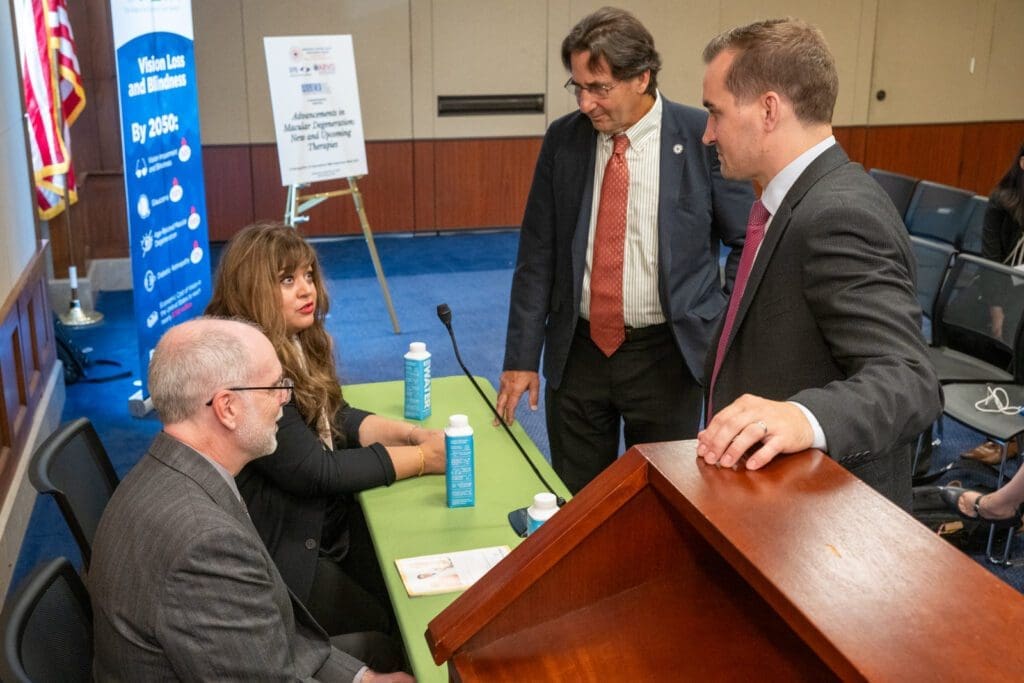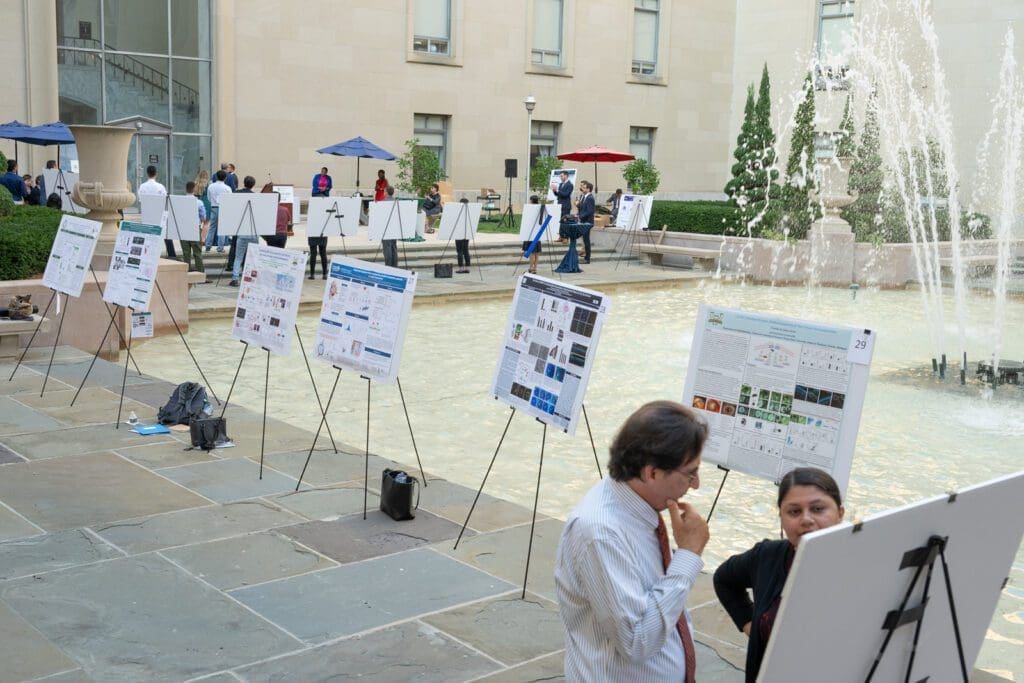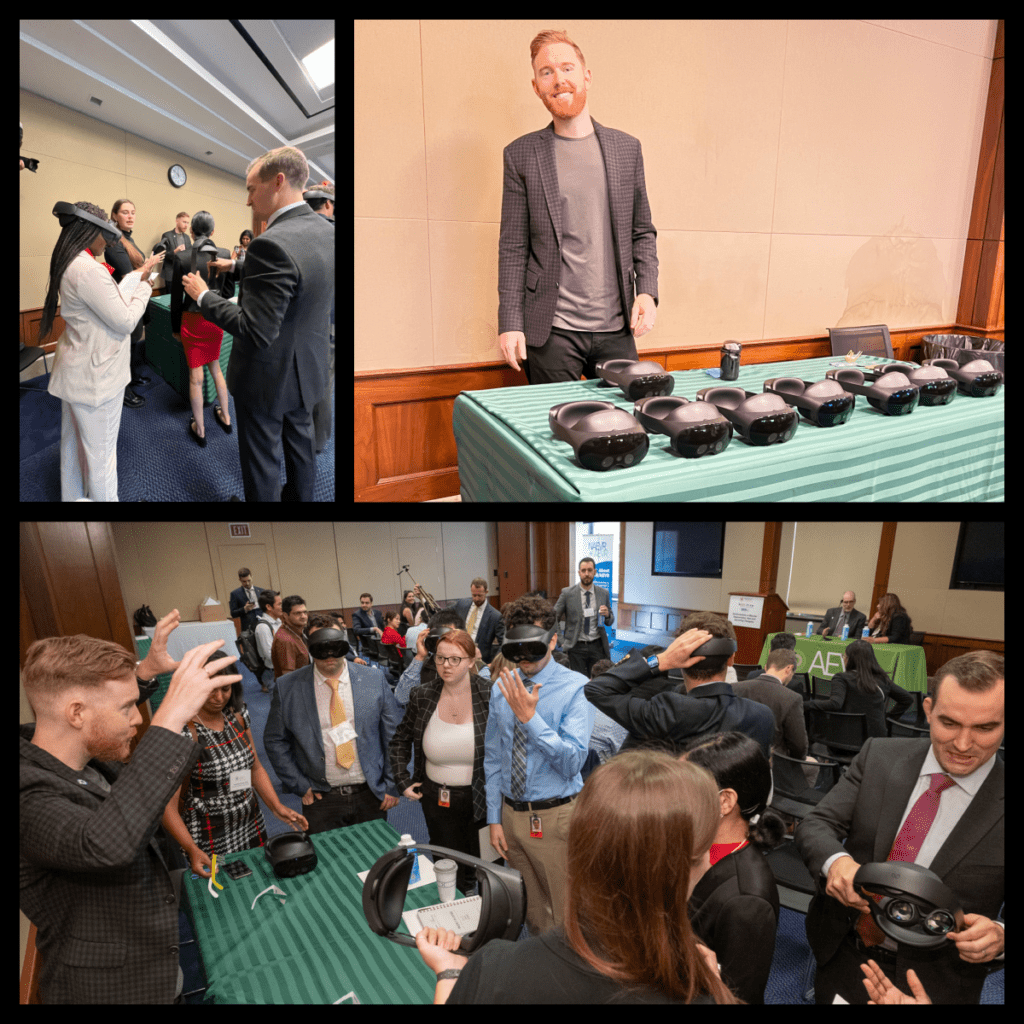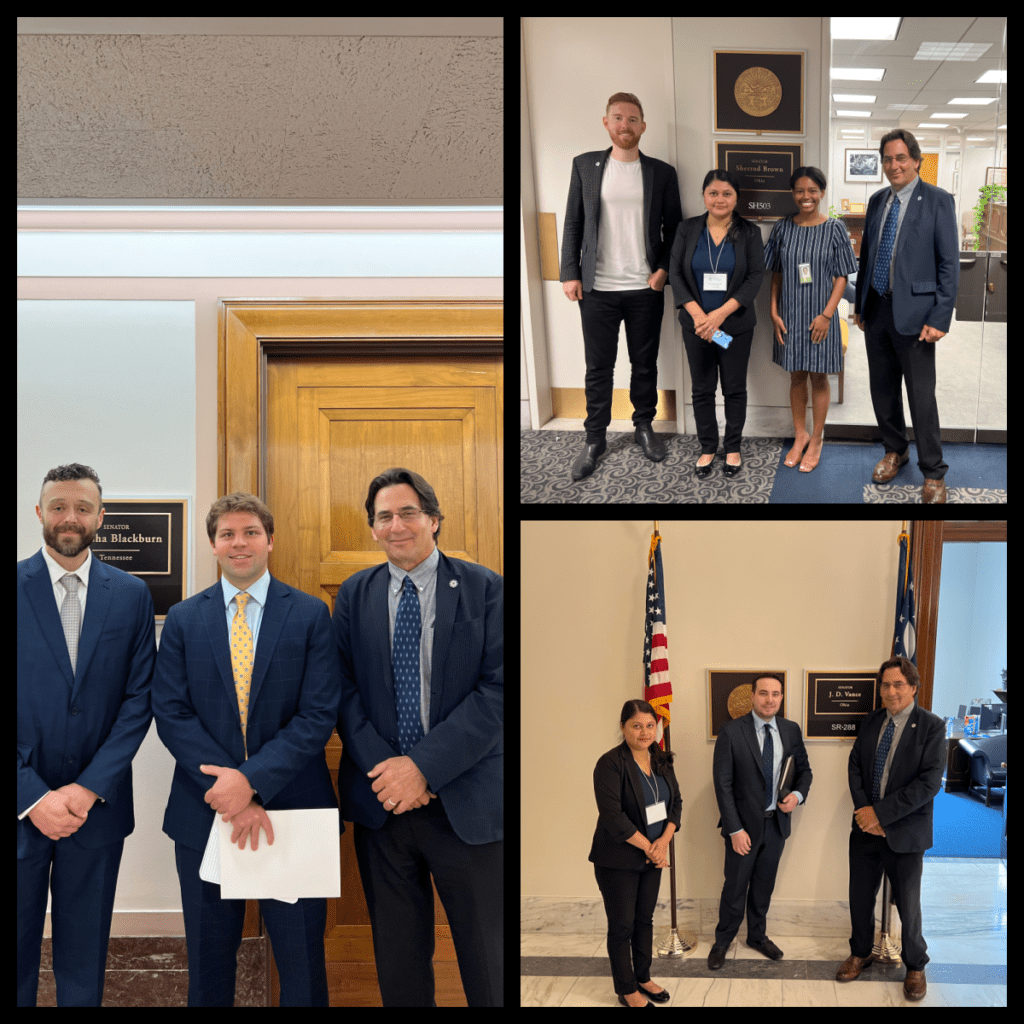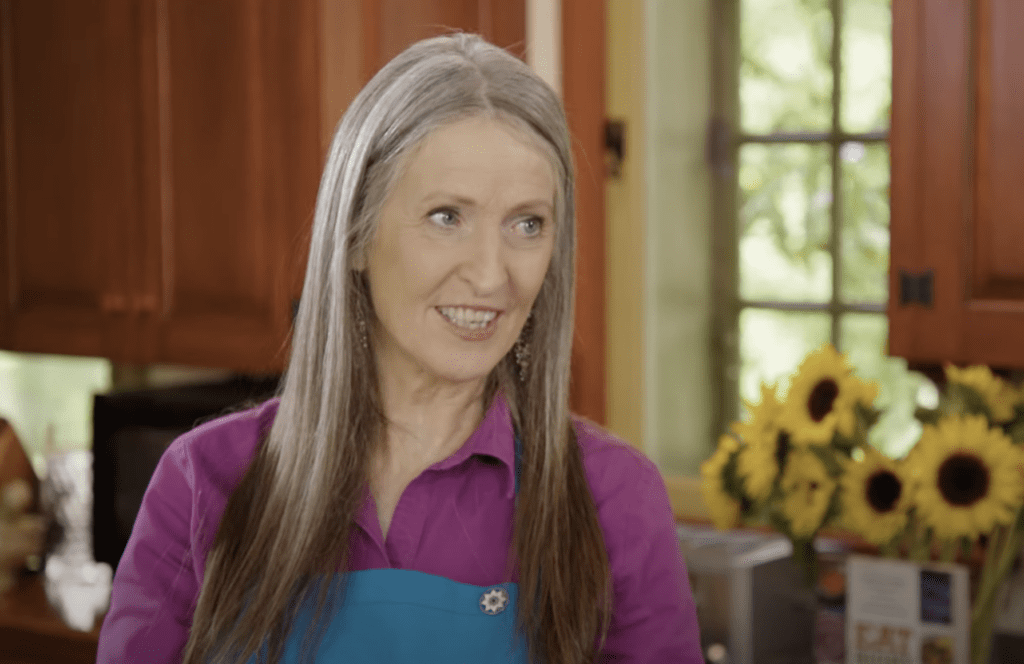As we get ready to turn another year over, we’d like to pause and share a few of the standout highlights and breakthroughs that donor support, your support, helped achieve.
In 2024, donor gifts were directed toward multiple research projects, and these investigations continue to evolve toward meaningful improvements in the lives of those affected by AMD.

A One-and-Done Therapy for Geographic Atrophy Shows Promise in Clinical Trials
Modifier Gene Therapy (MGT) represents a revolutionary approach to gene therapy and is showing promise in current clinical trials conducted by Ocugen.
Invented by AMDF-supported researcher Neena Haider (PhD, Harvard Medical School, and CEO and Founder of Shifa Precision), MGT involves boosting levels of a master regulator gene that corrects multiple defective genes while leaving healthy genes unaffected. (Humans have more than 30,000 genes, but less than 5% are regulator genes and even less have the capacity of a master regulator gene to oversee hundreds of gene networks.) This is unlike other gene replacement or editing therapies, which can only address one gene at a time.
The fact that MGT can restore the functioning of multiple genes makes it perfectly suited for AMD, which is associated with many genes in varying combinations. MGT is also a potential game-changer for retinal diseases like retinitis pigmentosa and Stargardt’s, of which there are numerous variations each caused by a single defective gene. While Modifier Gene Therapy does not restore dead cells to life it appears that it can keep dying cells alive and functioning, halting disease progression and preventing further vision loss.
Breaking News: Ocugen has just released early clinical trial data for OCU410, which treats geographic atrophy (GA), secondary to dry age-related macular degeneration. Those findings are all positive: no drug-related serious adverse events, reduced lesion growth, preservation of retinal tissue, and stabilization of visual function in low light surroundings. More good news for GA patients is the potential for OCU410 to treat disease progression with a single, subretinal injection as opposed to current GA treatments that require injections every month or two.
The New Narrative For AMD: Nutritional Changes, When Introduced Early, Can Affect Later AMD Transitions
As many patients have experienced and reported, current practice for those newly diagnosed with early AMD is to “wait and see,” meaning: monitor developments with annual eye appointments, take a supplement called the AREDS formula if you advance to intermediate AMD to slow the disease down, and intervene with eye injections if AMD progresses to its late wet or dry stages.
Breaking News: AMDF-supported findings recently published in The American Journal of Clinical Nutrition have completely changed that narrative. They indicate that nutritional intervention (based on fundamental principles that you can find on the AMDF website) in early AMD can reduce the likelihood of transitioning to later stages of macular degeneration. Essentially, diet becomes the first intervention for early AMD.
Combined with other, existing and emerging treatments to slow AMD (such as the recently-FDA-approved Valeda light therapy system), there are now tools available to slow and monitor AMD at every stage of the disease. This game-changing discovery is one of many made by longstanding AMDF researcher Johanna M. Seddon (MD, ScM, FARVO, FASRS, Director of the Macular Degeneration Center of Excellence and Department of Ophthalmology Professor/Interim Chair at UMass Chan Medical School). Her ongoing investigations into the interplay between genes and external, modifiable factors and their mutual influence on the development and progression of AMD form the basis for nearly all of today’s recommendations to reduce risk. Stop smoking, eat an AMD-appropriate diet, exercise, maintain your recommended weight, and keep your blood pressure within established limits. These findings all derive from Dr. Seddon’s work. They seem simple, yet are profound in their implications, providing interventions for those diagnosed with AMD at every stage of the disease. And their positive impact is cumulative, so adopting one recommendation is beneficial, adopting two is better than one, three better than two, etc.
In the conclusion of her published study, Seddon writes: “Physicians should emphasize the benefits of dietary and lifestyle modifications of patients during the earlier stages of AMD to slow progression of this chronic disease.” Going forward, the Seddon Lab is exploring the extent to which high genetic risk for progression to advanced AMD could be offset by adopting healthy lifestyle behaviors. Stay tuned.
A Guide to Assistive Technology Devices for People With Vision Impairment
If you have low vision due to AMD, wouldn’t it be nice to have a guide to help you find the assistive devices that best meet your specific needs? More than nice, since these high-tech, head-worn gadgets are generally expensive and not covered by Medicare, having actual, user-generated data could spare you from spending a lot of money on something that may not perform as expected.
With more and more of these AI-driven devices becoming available — offering everything from text enlargement to verbal text interpretation, scene description, contrast enhancement, and navigation assistance — that guide is precisely what an AMDF-supported study at New York City’s Lighthouse Guild is in the process of producing. The guide, which itself will be designed with usability in mind, will inform low vision patients, clinicians, and therapists who recommend assistive technologies.
Patients in the study are trained in how to use each device. They then use the devices to read book chapters, recipes, street signs, bank notes, and thermostats – and their reading time is measured. They are asked to use the devices to identify objects and faces, run a dishwasher, play cards, sort socks, separate beans, and write their signatures. All of these tasks are measured, and then the study participants are asked to rate the devices on satisfaction with effectiveness, convenience, ease-of-use, and weight.
Early findings indicate that these devices enlarge text about as well as a good, hand-held magnifier, but do not help perform other tasks of daily living. Knowing this may close the gap between user expectations and performance and help manufacturers design better products.
“Assistive technology has the potential to substantially improve the lives of people with vision impairment by facilitating independence, enhancing communication, improving the ability to perform activities of daily living, and increasing participation in society,” says Dr. William Seiple, Chief Research Officer at Lighthouse Guild and 2023 AMDF Thrive Award grantee. “However, there is not a one-size-fits-all solution.”
According to Seiple, one billion people worldwide have vision impairment that could be helped with assistive technology, and this number is expected to double by 2050, particularly due to age-related vision diseases like macular degeneration. When the guide is available, AMDF will be involved in its distribution. Until then, here’s more info on assistive devices, and some quick videos to help you use them.
Rewiring the Brain to Improve Vision
Dry age-related macular degeneration (AMD) damages central vision, but leaves peripheral vision intact. Today, there are no approved pharmacological approaches that improve visual function for these patients. This inspired the team at Dandelion Science to consider retraining the brains of AMD patients to make better use of their remaining peripheral vision…and, in a small study funded by AMDF, the early data seemed quite promising.
First, the researchers began by non-invasively mapping brain responses to natural images, specially adapted for both AMD and healthy participants, to understand differences in how they process visual information. These images targeted the visual cortex—the brain region responsible for interpreting visual signals from the eye. Then, the team demonstrated the effectiveness of AI-generated video that was optimized for peripheral visual entrainment in eliciting brain responses. This novel computational approach emulates the way in which the brain itself processes information.
Six AMD patients were exposed to this AI-generated imagery in addition to some training for about 15-20 minutes for three days, and four of them improved their visual acuity by about one line on the reading chart. One patient was sick on the final day and that person’s visual status could not be determined.
“We are rewiring peripheral vision to access central visual processing. Ultimately, treatments will likely require about 30 days of training but could be accessible on any smartphone, tablet, or laptop,” said Adam Hanina, CEO of Dandelion Science.
Dandelion Science recently partnered with the Wyss Center for Bio and Neuroengineering in Geneva, Switzerland, to further develop this groundbreaking platform. As they expand their studies and recruit more patients, their ultimate goal is to transform treatment accessibility—enabling patients to ‘watch their medicine’ on a smartphone, tablet, or laptop. With such innovative strides, the future of vision restoration looks increasingly bright.
Be part of this important work in 2025!




















